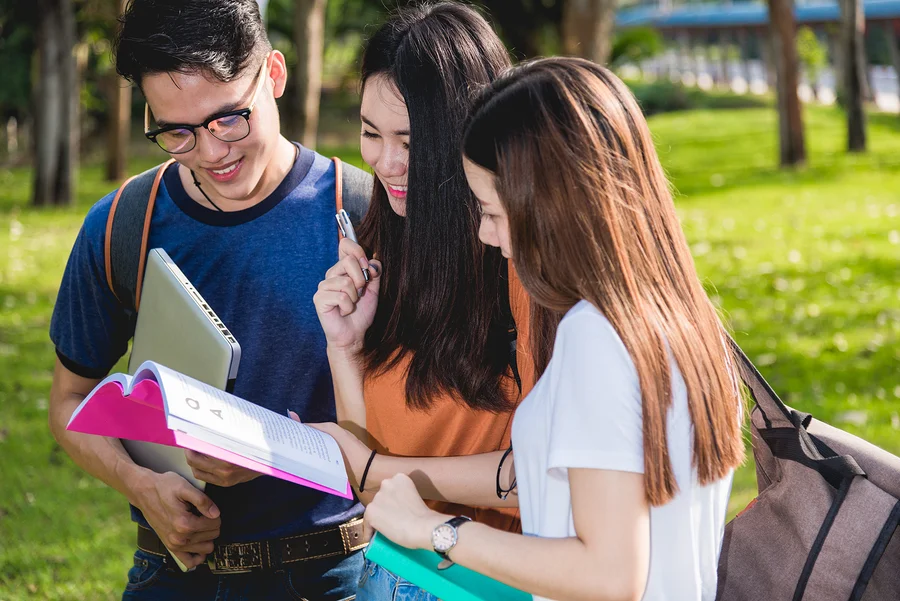Competency-based education is a controversial issue due to the many doubts that arise during its implementation. Here is an example applied in the area of literature, but can also be implemented in any other academic fields.
Competency-based education (CBE) is a controversial issue in the world of education since not even the relevant authorities in Mexico can agree on how to present it to teachers in such a way that they will understand and want to deploy it. This has resulted in a lack of institutional organization in the systems for defining programs and curricula, training practices, evaluation processes, accreditation and certification of this education model, causing a great deal of confusion among teachers about how to put it into practice and, above all, design and ultimately, evaluate CBE programs.
In a traditional education model, the teacher is the center of the teaching process, while the student plays a passive role and is required to memorize with little leeway to think and develop knowledge (Ortíz 2013). However, the education system has not kept up with the demands of today’s world, fostering the need for change in the teaching process.
“There is still a lot of confusion among teachers to develop competency-based planning and evaluation.”
The competency-based education approach is not new. It emerged in the USA and Canada in the seventies in response to an economic crisis that also affected the education sector in several countries. Later, this model was introduced into Mexico by the CONALEP (National College of Professional Technical Education) (Sesento, 2008), mainly seeking to develop and prioritize the competencies that students should acquire, in other words, what they can do with their knowledge applied in differentiated contexts.
Competencies primarily refer to the execution of knowledge: knowing how to think, knowing how to perform, knowing how to interpret, knowing how to act in different scenarios, regarding oneself and towards others.
“The methodology used can also be applied to other academic areas. Critical and reflexive thinking, oral expression and good communication, are the competencies that I seek to develop in students in my class.”
To implement competency-based academic planning, we can apply the proposal put forward by Mexican researcher Laura Frade Rubio, who presents the findings of her experience in competency-based work, from the plan to the evaluation processes, seeking continuous improvement in both learning and the development of the resultant competencies. This is an extremely comprehensive proposal that is based on the reality and needs of our students.
The following is an example applied to the area of literature, although it can also be implemented in any other academic area. In her methodology, Frade presents the following stages for competency-based planning:
-
Objectives (generic competencies)
-
Disciplinary competencies
-
Performance indicators
-
Didactic situation
-
Cognitive conflict
-
Didactic sequence
-
Evaluation plan
These stages order and consolidates the competency-based teaching-learning process as a whole. The results obtained should be observable instantly when the student uses the knowledge to solve any situations that arise.
How can reading comprehension competency be developed in high school students?
The following example establishes how to develop the reading comprehension competency in second-semester high school students in the subject Spanish Language, Art and Literature.
Students are expected to develop the following competencies:
-
Oral expression and good communication: Listen, interpret and offer relevant messages in diverse contexts through the use of the appropriate media, codes and tools.
-
Critical and reflective thinking: Uphold a personal stance on topics of general interest and relevance, considering other points of view critically and reflectively, allowing students to put forward hypotheses or critically assess a complex text, taking into account multiple conditions or perspectives and begin able to apply complex external knowledge to the text. They will be able to formulate classifications to assess the different characteristics of a document in terms of its audience.
To read and achieve true comprehension, students need to analyze the text in depth. The necessary students’ activities are: reading the title; scanning the book; identifying words that are difficult to understand and define them according to the context; locate two key words in each paragraph, thereby recognizing the idea of each word and the general idea of the text.
These are some of the tools students should apply when reading to grasp the ideas expressed by the author:
-
Identify the primary and secondary ideas, and the general and specific information in the text
-
Analyze the author’s attitude and tone regarding the topic, characters or events
-
Identify what the text explicitly and implicitly establishes
-
Outline inferences
-
Apply the author’s ideas to other situations
-
Critique the topic addressed, arguing their position
-
Identify the text’s organization method
Diverse strategies can be used to achieve this:
-
Synoptic tables
-
Mental and/or conceptual maps
-
Summaries
-
Questionnaires
Instruments such as rubrics or checklists can be prepared for the evaluation plan and should contain achievable parameters, to ascertain the level of competence reached by the student. The practical exercises completed by students will be taken into consideration, such as the detailed, precise identification of multiple inferences, comparisons, and contrasts. Students should be able to: demonstrate a complete and detailed understanding of the whole text or particular sections; have the capacity to integrate information from more than one text; be able to handle unusual and abstract ideas in the presence of obviously conflicting information; complete abstract classifications in order to interpret the text; generate evaluative judgments; and identify an emotional or aesthetic response from the texts they read.
It is essential for all of us who are dedicated to the noble task of teaching to give ourselves the time to reflect on the changes that are c
rucial to improving education. Let’s not limit ourselves to just divulging a repository of knowledge. We need to prepare individuals who will be citizens of the world, capable of resolving situations in differentiated, collaborative, respectful, tolerant and honest contexts, and of anticipating and facing up to the demands of the 21st century.
About the author
Luisa Guillermina Ramírez Mazariegos (luisag.ramirez@itesm.mx) holds a Ph.D. in Education. She teaches Communication, Literature, Spanish Language, Art and Culture in the Humanities Department at Tecnológico de Monterrey, Campus Hidalgo.
This article from Observatory of the Institute for the Future of Education may be shared under the terms of the license CC BY-NC-SA 4.0 
)
)







)
Sofía García-Bullé
Sofía García-Bullé
Sofía García-Bullé